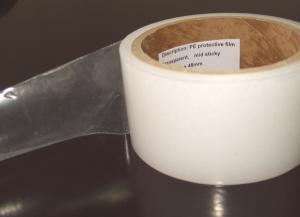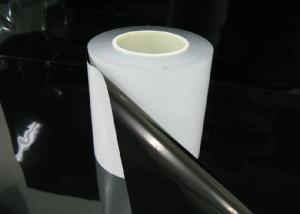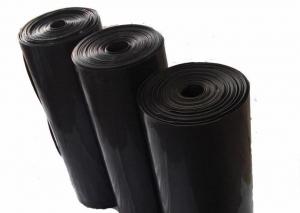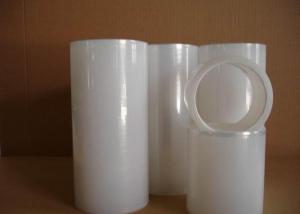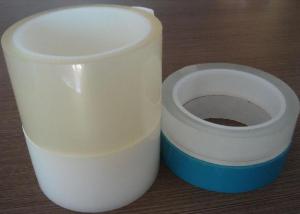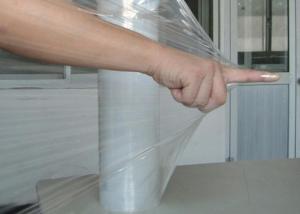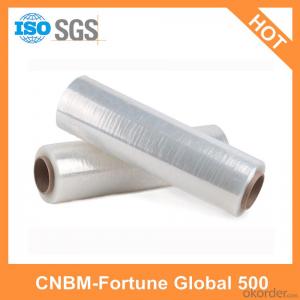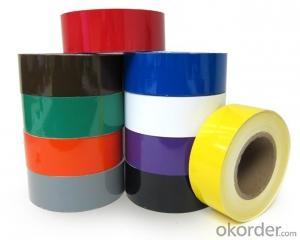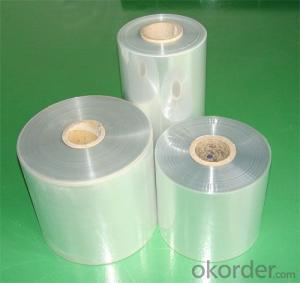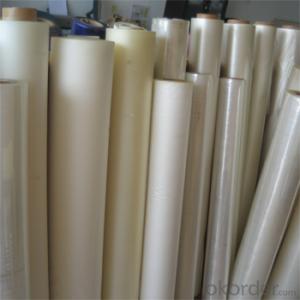PE protective flim HN-60B
- Loading Port:
- China Main Port
- Payment Terms:
- TT OR LC
- Min Order Qty:
- -
- Supply Capability:
- -

- OKorder Service Pledge
- Quality Product
- Order Online Tracking
- Timely Delivery

- OKorder Financial Service
- Credit Rating
- Credit Services
- Credit Purchasing
Total Thickness (adhesives + carrier):60+10%micron
Colour: Black & White
Density 0.95g /cm3
Tensile Strength (Long): >18N/25mm
Tensile Strength (Trasv): >13N/25mm
Adhesion (to stainless steel):150g/25mm
Elongation at break-MD: >200%
Elogation at break-CD: > 350%
Static Shear 23 DC: >48 hours
Storage: 35 DC
Humidity: 80%
Shelf: 6 months
- Q:nan
- According to materials, protective films can be classified into PET film, PE film, PVC film, PP film (including OPP and CPP films), etc. This is common way used in industry. Apart from this, some also classify the films according to things like adhesion, thickness, colors as well as the ways of use. As for their use, protective films are used during production, processing and packaging of the finished products. The key point is to see what the clients use these films for. It's determined by the processing of the clients. All in all, the clients use the films to protect their products from scratches, dirt and moisture and to impove the quality and competitiveness of their products.
- Q:nan
- Scraper used in screen printing surely works. Give the scraper a try. The effect is good. And the method is easy to master. What's more, it won't damage the stainless steel.
- Q:nan
- 1. Corona treatment is used in the process of the making of PE protective film, increasing the surface area of the film and making it static to meet the need of the following gluing. It's conducive to the combination of glue and film this way. 2. There's no such PE anti-static protective film with glue itself has adsorption function. Multi-layer film blowing machine can make such product at one time.
- Q:nan
- We have developed a kind of inner-added transparent raw material for anti-static film that can be used in curtain coating, film blowing, calendering, extrusion, extruded profiles and tubular products, injection molding as well as co-extrusion. The tranparency of the finished products is high. The anti-static value reaches 10 to the power of 9. And there's no educt.
- Q:nan
- Many people have the same question. The protective film on the stainless steel door is difficult to remove after using fot a long time. Does it work to heat the film with electric hair drier? Is there any other ways? The answer is yes. There are many other ways: 1. If the film is not too big, you can apply some lacquer thinner to it and then scrub it with cleaning ball. 2. Detergent used in textile industry will work (Bottled such detergent is called AL). I've tried it. It really works well. 3. Use sulfuric acid. But you should mix it with water before use, otherwise the door will corrode. Immerge the door into the mixed sulfuric acid for a period of time and scrub it with cleaning ball. 4. Firstly, use electric hair drier to heat the film. And then slowly tear it off or scratch it off using small wooden shovel. The marks left by glue can be wiped off with solvent.
- Q:What are the main ingredients of the PE protective film? Is there any harm to human health?
- The main ingredients of PE protective film are PE film and acrylic adhesive, which are made into protective film,
- Q:nan
- As for clay, especially the soft type, if you apply protective oil before it's complete dry, indentations may remain at the last stage of pressing.
- Q:nan
- Cutting PE protective film is a highly required work. It's not simple as what you think. Things like cutting speed, tool bit and the heat generated during processing may affect the result. The solution is actually very simple. Come to our factory and take a look!
- Q:What are the test standards for protective films?
- There are no national standards for the test of protective films, and they are usually set up according to their own situations.
- Q:nan
- There are three types of protective film used on ceramic tiles: The first one is plastic thin film which can be slowly torn by hands or gently rubbed off with steel wool; The second is anti-fouling protective film which can be wipe off using towel with white cement; The third is wax protective film which can be wipe off with dry towel with electric diluent, lacquer thinner, talcum powder or white cement.
1. Manufacturer Overview |
|
|---|---|
| Location | |
| Year Established | |
| Annual Output Value | |
| Main Markets | |
| Company Certifications | |
2. Manufacturer Certificates |
|
|---|---|
| a) Certification Name | |
| Range | |
| Reference | |
| Validity Period | |
3. Manufacturer Capability |
|
|---|---|
| a)Trade Capacity | |
| Nearest Port | |
| Export Percentage | |
| No.of Employees in Trade Department | |
| Language Spoken: | |
| b)Factory Information | |
| Factory Size: | |
| No. of Production Lines | |
| Contract Manufacturing | |
| Product Price Range | |
Send your message to us
Similar products
New products
Hot products
You Might Also Like
